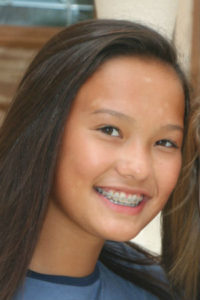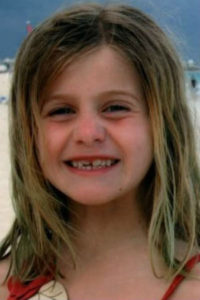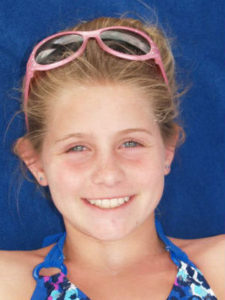It’s a big deal when your child loses their first baby tooth. They look so adorable with their missing teeth! Shortly after, one week to six months, an adult (permanent) tooth will appear-this is what I call the awkward years! Their little faces don’t quite fit their new adult-size teeth. This can be concerning for parents when they see crooked teeth and large gaps as the new teeth erupt. It is often difficult for the untrained eye to determine if there really is an orthodontic problem. Here is an example of a little girl through the years. When her permanent teeth started to appear, they looked quite crooked. But when all of her permanent teeth came in, her teeth looked really straight. In reality, she ended up needing braces for smaller problems (malocclusions) that are not as noticeable, but if left untreated would have left her with jaw issues as an adult.
Dr. Bomstad and Dr. Karban send most of their patients to Harrington Orthodontics or Lake Minnetonka Orthodontics, depending on which is more convenient. The American Academy of Orthodontists recommend your child be seen by an orthodontist by 7 years old. Even though most children do not begin orthodontic treatment until they are 9-14 years old, an early evaluation can help catch other problems such as persistent thumb sucking, tongue thrusting, mouth breathing, assess age appropriate tooth loss, overcrowding, and crossbite. If caught early, these  problems are easier to treat. For example, if a crossbite is diagnosed early, a palatal expander is very effective because is works with your child’s rapidly growing jaw. If left untreated, oral surgery may be the only option to fix such a problem. It is common to wear braces in different stages, depending on the issues your orthodontist diagnoses. Having braces early on can help create room for erupting teeth in crowded mouths or hold open spaces for missing teeth. Even though getting braces in different stages can FEEL like your child has spent more time in braces, it ultimately shortens the ACTUAL time spent in braces. Your orthodontist will treatment plan what is best for your child. The length of time spent in braces also varies. Some of the factors that affect the time spent in braces are; age of treatment, severity of teeth, dental health, type of braces and distance teeth need to be moved. If rubber bands or headgear are needed, your child’s compliance and diligence will greatly affect the time spent in braces. Most children spend 1-3 years in braces. If you have questions, Dr. Bomstad and Dr. Karban can help you determine if your child is ready to see the orthodontist. To make an appointment, call 952-938-7746 or click HERE.
problems are easier to treat. For example, if a crossbite is diagnosed early, a palatal expander is very effective because is works with your child’s rapidly growing jaw. If left untreated, oral surgery may be the only option to fix such a problem. It is common to wear braces in different stages, depending on the issues your orthodontist diagnoses. Having braces early on can help create room for erupting teeth in crowded mouths or hold open spaces for missing teeth. Even though getting braces in different stages can FEEL like your child has spent more time in braces, it ultimately shortens the ACTUAL time spent in braces. Your orthodontist will treatment plan what is best for your child. The length of time spent in braces also varies. Some of the factors that affect the time spent in braces are; age of treatment, severity of teeth, dental health, type of braces and distance teeth need to be moved. If rubber bands or headgear are needed, your child’s compliance and diligence will greatly affect the time spent in braces. Most children spend 1-3 years in braces. If you have questions, Dr. Bomstad and Dr. Karban can help you determine if your child is ready to see the orthodontist. To make an appointment, call 952-938-7746 or click HERE.


